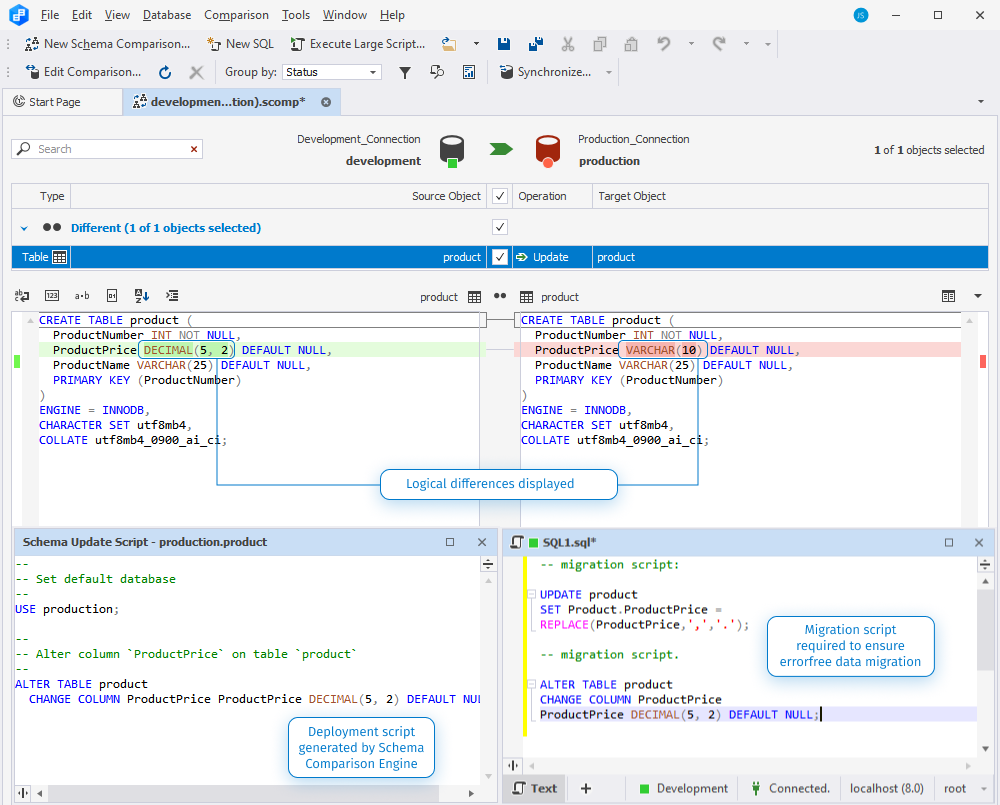Changing the data type or size of a column
When you change the data type or size of the column, the data can be truncated during the deployment.
Solution: To avoid deployment errors and ensure data integrity, you need to create a migration script:
- Generate a migration script to update values
- Modify the column data type
Note
The comparison engine of the tools doesn’t handle all cases automatically, which is why the cases mentioned above must be resolved manually.

The table provides source and target table script examples to illustrate the case:
| Source table script example | Target table script example |
|---|---|
|
|
The table provides examples of scripts generated by the Schema Comparison engine and those that should be generated manually for errorless data migration to illustrate the case:
| Script generated by the Schema Comparison engine | Script that should be generated manually for errorless data migration |
|---|---|
|
|